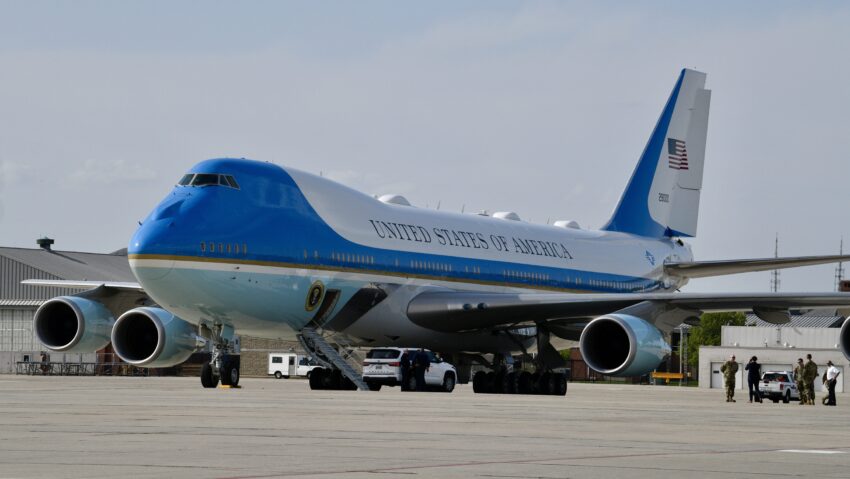President Donald J. Trump arrives aboard Air Force One and delivers remarks during a press briefing at Selfridge Air National Guard Base, Michigan, April 29, 2025. (U.S. Army National Guard photo by 2nd Lt. Paige Bodine)
WASHINGTON — Boeing will replace its current head of the troubled Air Force One program with a new hire from Northrop Grumman best known for leading the division that developed the B-21 bomber, according to an internal email seen by Breaking Defense.
Steve Sullivan, formerly vice president of Northrop’s strike division, has been tapped to lead Boeing’s VC-25B program, wrote Jamie Burgess, Boeing’s vice president of its bombers, mobility and surveillance division, in an email sent to Boeing employees today. The message does not state Sullivan’s start date.
Burgess praised Sullivan as a “strategic leader with extensive experience in program management” and “a proven track record of steering complex multi-billion dollar military aircraft programs” that includes the B-21 and X-47B experimental combat drone.
“We are confident that Steve’s leadership and problem-solving skills will benefit the VC-25B program as he takes on this new challenge,” Burgess stated.
A Boeing spokesperson declined to comment for this report.
Sullivan is set to replace Greg Coffey, who became vice president and program manager of the VC-25B program in September 2024, according to his LinkedIn profile. Coffey is set to return to Boeing’s air dominance division, where he will continue the development of the Air Force’s next training jet as deputy program manager of the T-7A program.
“Greg has been instrumental in navigating the VC-25B program through a dynamic period marked by significant changes in the Presidential administration. His leadership and commitment have been pivotal to the program’s success during this transition, setting a high standard for all of us,” Burgess stated.
Sullivan is set to take the helm of Boeing’s most troubled program at a time where the program is underneath the scrutiny of President Donald Trump, who wants to fly in a new Air Force One jet before the end of his tenure.
Trump himself brokered with Boeing leadership on the Air Force One contract in 2018, ultimately resulting in a $3.9 billion deal to turn two 747 jumbo jets into new Air Force One planes — a laborious process that involves turning commercial airlines into highly militarized command centers capable of weathering a nuclear blast.
Delivery of the first jet, originally set for 2024, has been delayed due to numerous technical challenges that, in turn, piled additional cost overruns onto Boeing.
Steve Parker, the interim CEO of Boeing’s defense unit, told reporters last week that recent changes to the VC-25B requirements could allow the company to deliver the aircraft years earlier than expected, although he would not go as far as to confirm the 2027 delivery date that Air Force officials cited in May as Boeing’s latest estimate. (A source told Breaking Defense in December that the latest estimate was 2029.)
“Over the last four or five months, we’ve made more progress than we’ve made in the last four years. … We have been able to see our way through some of these requirements that were just physically impossible to do,” Parker said during a roundtable at Paris Air Show. “We’re very close to locking in the design and completing it. We’ve got a couple more conversations … with the Air Force and the administration on configuration, but just making really, really good progress.”
However, at the same time, Trump is pursuing the development of a third new Air Force One plane — originating from a 747 gifted by Qatar that will be modified by L3Harris, according to numerous media reports.
Click this link for the original source of this article.
Author: Valerie Insinna
This content is courtesy of, and owned and copyrighted by, https://breakingdefense.com and its author. This content is made available by use of the public RSS feed offered by the host site and is used for educational purposes only. If you are the author or represent the host site and would like this content removed now and in the future, please contact USSANews.com using the email address in the Contact page found in the website menu.








